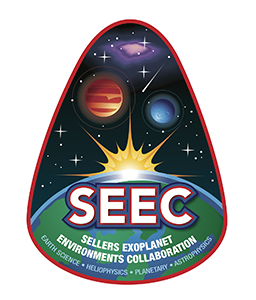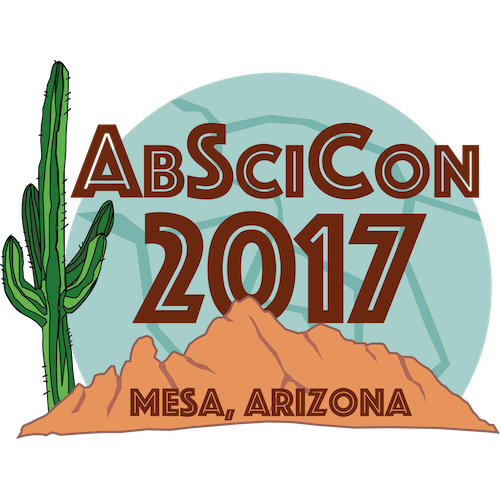
Motivated by the rapidly increasing number of known Earth-sized planets, the increasing range of extreme conditions in which life on Earth can persist, and the progress toward a technology that will ultimately enable the search for life on exoplanets, the Vatican Observatory and the Steward Observatory announce a major conference entitled The Search for Life Beyond the Solar System: Exoplanets, Biosignatures & Instruments.
The goal of the conference is to bring together the interdisciplinary community required to address this multi-faceted challenge: experts on exoplanet observations, early and extreme life on Earth, atmospheric biosignatures, and planet-finding telescopes.
The sessions of the five-day meeting will include invited review and contributed talks, followed by extended discussions. There will be posters, but no parallel sessions. We will limit the number of attendees to 250 to allow interactions between the participants. The conference will include a banquet (Wednesday evening) and an afternoon break (Tuesday) and two evening slots for collaborative team meetings. The Friday morning session will include a coordinated discussion that will provide input for a conference summary.
Day 1
Session I: Terrestrial and Extraterrestrial Life
9:00 – 9:15 Welcome: Buell Jannuzi (Steward Observatory) and José Funes
9:15 – 9:45 John Baross: The Limits of Earth Life
9:45 – 10:15 Steve Benner: Alien Biochemistries and Metabolic Byproducts Leading to Atmospheric Biosignatures
10:15 – 10:35 Yu Komatsu: Toward understanding as photosynthetic biosignatures: light harvesting and energy transfer calculation
11:00-11:30 Lynn Rothschild: Synthetic Biology and the Search for Extraterrestrial Life
Session II: Habitable Planets and Biosignatures
1:30 – 2:00 Victoria Meadows: Factors Affecting the Habitability of Earth-like Planets
2:00 – 2:20 Ilaria Pascucci: An enhanced carbon chemistry in disks around very low-mass stars and brown dwarfs?
2:20 – 2:40 Evgenya Shkolnik: HAZMAT I: The Evolution of X-ray, Far-UV and Near-UV Emission from Early M Stars
2:40 – 3:00 John Lee Grenfell: for Earth-like Planets in the HZ of M-Dwarf Stars
3:20 – 3:40 Feng Tian: Stability and Oxygen Contents of the Atmospheres of Planets in the HZ of M dwarfs
3:40 – 4:00 Sarah Rugheimer: Influence of UV activity on the Spectral Fingerprints of Earth-like Planets around M dwarfs
4:00 – 4:20 Miguel Yamila: Spectral features of Mini-Neptunes and EGP orbiting different stars: exploring the effect of high stellar FUV radiation
4:20 – 5:00 William Welsh: Observations of Kepler Habitable Zone Circumbinary Planets & Nader Haghighipour: Dynamical Evolution and Migration of Circumbinary Planets and Their Habitability
Day 2
Session II: Habitable Planets and Biosignatures (continued)
9:00 – 9:20 Shoji Ueta: ice-covered terrestrial planets
9:20 – 9:40 Eliza Kempton: Lessons from the First Observations of Super-Earth Atmospheres
9:40 – 10:00 Jade Carter-Bond: Terrestrial planet composition: simulation and observation
10:00 – 10:20 Rory Barnes: A Method to Identify the Boundary Between Rocky and Gaseous Exoplanets from Tidal Theory and Transit Durations
10:40 – 11:10 Sara Seager: On The Reliability/ambiguity of Atmospheric Biosignatures and Key Challenges for Biosignature Studies
11:10 – 11:30 Eduardo Janot Pacheco: A New Paradigm for Habitability in Planetary Systems: the Extremophilic Zone
11:30 – 11:50 Enric Palle: Modeling the globally-integrated spectral variability of the Archean Earth: The purple planet
11:50 – 12:10 David Soderblom: The problem of stellar ages
Day 3
Session II: Habitable Planets and Biosignatures (continued)
9:00 – 9:20 Edwin Turner: Direct Imaging Detectability of Tidally Heated ExoMoons
9:20 – 9:40 Shim Sang-Heon: Un-Earth-Like Interiors of Earth-Like Exoplanets
9:40 – 10:00 Adam Showman: Atmospheric circulation and climate of terrestrial exoplanets and super Earths
10:00 – 10:20 Gijs Mulders: The Water Content of Exo-earths in the Habitable Zone
Session III: Transiting Exoplanets: From State of the Art to the Near Future
11:00 – 11:30 Natalie Batalha: Eta Earth and Insights from Kepler on the Frequency of Earth- sized Planets in the Habitable Zone
1:30 – 2:00 Ignas Snellen: Characterizing the Atmospheres of Transiting Planets from the Ground
2:00 – 2:20 Brice-Olivier Demory: Space-based Characterization of super-Earth exoplanets
2:20 – 2:40 Rene Doyon: Transit Spectroscopy with NIRISS on JWST
2:40 – 3:00 Wesley Traub: An Estimate of Eta-Earth, From Simulating Kepler Data
3:40 – 4:10 Heike Rauer: Observations of Extrasolar Planet Transits: What’s Next?
4:10 – 4:30 George Ricker: The Transiting Exoplanet Survey Satellite Mission
4:30 – 4:50 Daniel Rouan: Could we constrain some major properties of hot Super-Earths with NIRSPEC-JWST spectra?
4:50 – 5:10 Andreas Quirrenbach: CARMENES: Looking for Blue Planets Orbiting Red Dwarfs
Day 4
Session IV: Direct Imaging: From State of the Art to the Near Future
9:00 – 9:20 Beth Biller: The Gemini/NICI Planet-Finding Campaign: The Frequency of Planets around Young Moving Group Stars
9:20 – 9:40 Laird Close: H-alpha as a Probe of Very Low-mass Planets: The GAPplanetS Survey With the MagAO System
10:00 – 10:20 Andy Skemer: LEECH: LBTI Exozodi Exoplanet Common Hunt
10:40 – 11:10 Markus Kasper: Capabilities and Expected Results from Next-Generation Adaptive Optics Systems
11:10 – 11:30 Christoph Keller: Towards Polarimetric Exoplanet Imaging with ELTs
11:30 – 11:50 Klaus Strassmeier: Biosignatures from circular spectropolarimetry: key science for ELTs?
11:50 – 12:10 William Sparks: Remotely sensing homochirality, a powerful generic biosignature
1:30 – 2:00 Phil Hinz: The Challenge of the Exozodiacal Light
2:00 – 2:20 Denis Defrère: The Hunt for Observable Signatures of Terrestrial Planetary Systems
2:20 – 2:50 Olivier Guyon: Coronagraphy — From State of the Art to the Near Future
2:50 – 3:10 Charles Beichman: The Near-Infrared Camera on the James Webb Space Telescope: The Next Great Step in Exoplanet Research
3:30 – 4:00 Alain Leger: Searching for extrasolar life, the capabilities of affordable missions! as a function of eta Earth
4:00 – 4:20 Antoine Crouzier: NEAT: an astrometric space telescope to search for habitable exoplanets in the solar neighborhood
4:20 – 4:40 Eduardo Bendek: Direct Imaging of Exoplanets around Alpha Centauri and Other Multiple Star Systems
4:40 – 5:00 Jared Males: Direct Imaging of Extrasolar Giant Planets in the Habitable Zone
Day 5
Session IV: Direct Imaging: From State of the Art to the Near Future (continued)
9:00 – 9:30 Peter Lawson: High-Contrast Imaging and Interferometry Mission Concepts for The Characterization of Exoplanets
9:30 – 9:50 Nick Siegler: Technology Development Towards a Flight Coronagraph
9:50 – 10:10 Jeff Kuhn: Enabling Technologies for Detecting Life in the Universe: The Colossus Project
10:45-12:00 Panel Discussion
1:30 – 2:00 Jill Tarter: SETI: Past, Present, Future
2:00 – 2:20 Eric Korpela: SETI Programs at the University of California, Berkeley
2:20 – 2:40 Shauna Sallmen: Indications of Technology in Planetary Transit Light Curves due to Dark-side Illumination
2:40 – 3:00 Ian Morrison: Extending Galactic Habitable Zone Modelling to Include the Emergence of Intelligent Life
3:00 – 3:20 Closing Remarks
 Environments of Terrestrial Planets Under the Young Sun: Seeds of Biomolecules
Environments of Terrestrial Planets Under the Young Sun: Seeds of Biomolecules 2018 Georgia Tech Astrobiology Colloquium
2018 Georgia Tech Astrobiology Colloquium Habitable Worlds 2017
Habitable Worlds 2017 AbSciCon 2017
AbSciCon 2017